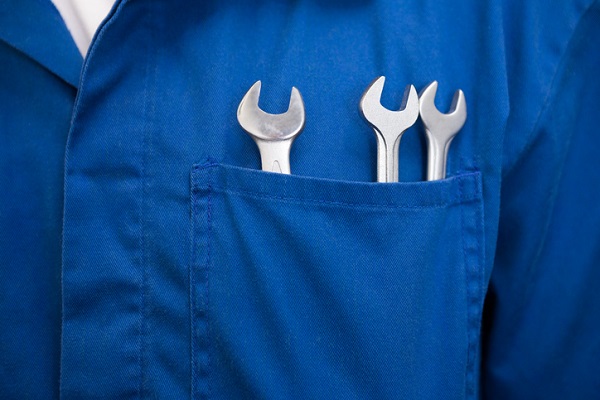
It may be no surprise, then, to find out that a faulty water pump can lead to serious and sometimes irreparable damage. In fact, a failing pump can lead to overheating or even outright engine failure. Fortunately, one of the best ways to guarantee that your customers have a good engine under the hood is to replace a failing water pump before any damage actually occurs.
If you’re interested in starting a career as an auto mechanic, read on to find out a few helpful tips you can use when it comes time to replace a car’s water pump.
1. Signs That Show Service Technicians When a Pump Should Be Replaced
There are a few general rules of thumb you can use to determine if a water pump needs to be replaced once you become a certified mechanic.
Water pumps were designed to warn service technicians when they need to be replaced, with leakage being one of the most obvious signs of a faulty pump. When the bearings inside a pump start to fail, the seal begins to weep coolant, which provides incriminating drops that tell you and your customers it’s time for a replacement.

2. Prepare all of the Tools You’ll Need Before You Drain the Coolant
Coolant can, of course, be a bit of a mess to deal with, but that doesn’t mean there aren’t ways to prepare to work with it.
You’ll need to drain the radiator of all coolant, so make sure you have a catch pan to empty the liquid into. Once the pump is empty, you can loosen the bolts and remove it—but be sure that it’s completely disconnected so you don’t take anything else with it. Try to keep all the spare parts together, as you may need them to attach the new pump in later.
3. Use Your Automotive Service Technician Training to Prep the Sealing Surface
Whenever a water pump is removed, it typically leaves behind old material or adhesives. In order to reduce risks of a coolant leak, it’s a good idea to clean the surface using the techniques you cover in automotive service technician training.
Surface prep difficulty may change depending on the seal; a sealant like an o-ring, for example, may be easier to clean than gasket material that has hardened because of the heat from the radiator. If you use a gasket scraper, be careful not to gouge the housing. If old gaskets or sealants aren’t coming off, a drill with a wire brush might come in handy, and create a better sealing surface to work with.
4. Take Your Time Replacing the Pump After You Become a Certified Mechanic
Patience is important, especially when it comes to replacing a water pump. Even simple mistakes can have serious consequences, so making sure you’re doing the job right the first time can help spare you and your client trouble down the road.
Water pumps use a variety of seals to keep coolant where it belongs. Although silicone sealant is commonly used, it should never be used with o-ring seals or material gaskets. Carefully apply the sealant judicially, but remember that too much sealant can be just as bad as using too little. After the pump has been attached, purge the air from the cooling system and refer to the manual for the proper coolant refilling instructions.
Do you want to take the next step into a rewarding career in the automotive industry?
Contact Automotive Training Centres for more information about our auto service technician course.

